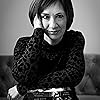Jane Davis asked this question about
At the Stroke of Nine O'Clock:
All stories need an angle. In writing about the aftermath of a fictional disaster, how did you choose to tell this story? (I’m thinking characters, point of view, etc.)
About Goodreads Q&A
Ask and answer questions about books!
You can pose questions to the Goodreads community with Reader Q&A, or ask your favorite author a question with Ask the Author.
See Featured Authors Answering Questions
Learn more


